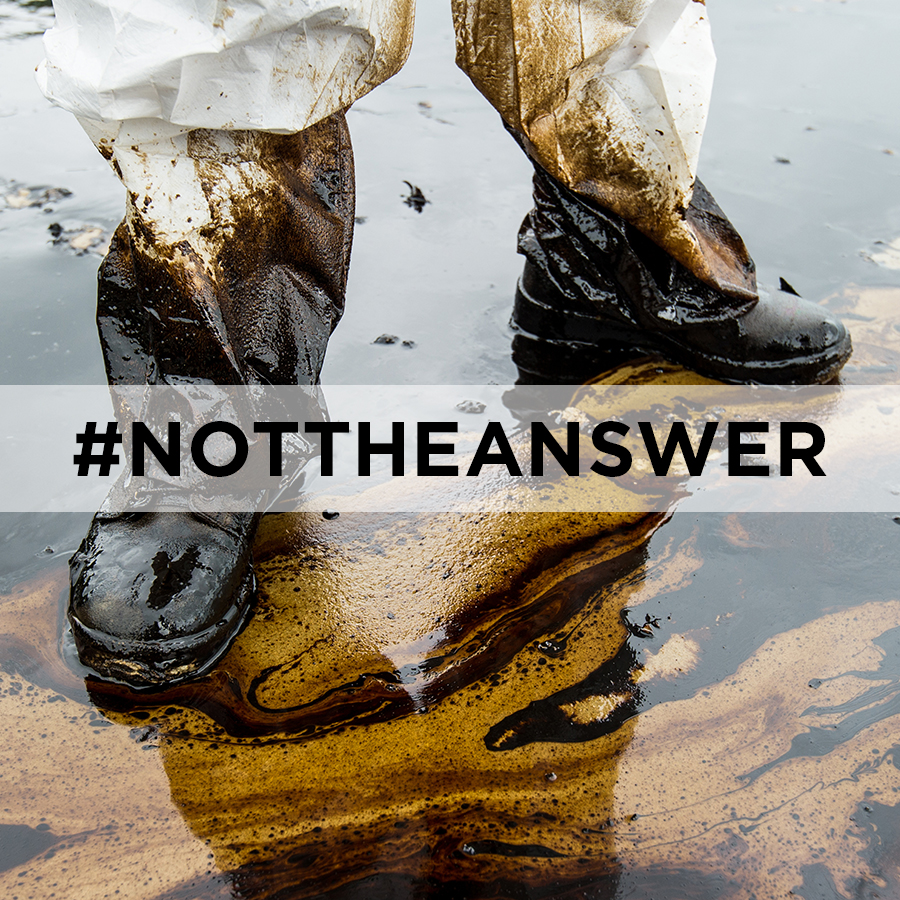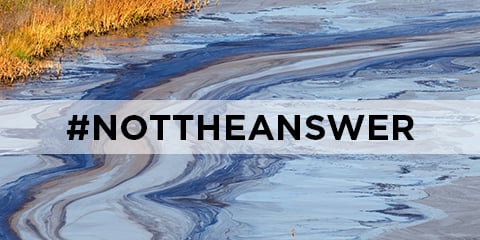
10.07.17
Port of Grays Harbor Concludes that Crude Oil Terminals are Not The Answer for Washington Coast
By Gus GatesAs a state with 5 refineries within the estuarine waters of the Salish Sea, Washington is continually under threat from a catastrophic oil spill along our coastlines and in our watersheds.
In recent years, the amount of crude oil coming into our state via tanker vessel from Alaska has decreased, while we’ve seen a massive increase in oil train traffic being brought in from the Bakken region (North Dakota/Montana) to feed the refineries. With the recent lifting of the ban on export of domestically produced oil, big oil has been licking their chops to develop huge export terminals in Washington given that this is the closest rail distance to deep water ports with the ability to access Asian markets. Grays Harbor, on the Southwestern Washington coast, had 3 oil export proposals for expansion and development over the past few years. Below is short recap of how these proposals eventually fizzled, resulting in a major victory for our marine ecosystem and recreational enthusiasts of the Washington coast.
Surfrider was an original party to the legal challenge in 2013 when the City of Hoqiuam and Washington Department of Ecology found no significant impact of 2 of the 3 proposed oil terminals to be built within Grays Harbor. Surfrider filed a legal challenge along with our partners to send the matter to the Shoreline Hearings Board, and they agreed that these projects needed to initiate a full Environmental Impact Statement (EIS) process as part of the State Environmental Policy Act (SEPA).
Fast forward a few years, with Surfrider activists and staff staying engaged and raising concerns via written and oral testimony during the lenghty EIS process when, “On September 30, 2016, the City of Hoquiam and the Department of Ecology issued the Final EIS for the Westway Expansion Project. Both the Westway Draft EIS and Final EIS found the proposed project would cause significant and unavoidable environmental impacts to health and safety if a crude oil spill, fire or explosion occurs. Both also found the expansion would cause significant impacts in noise, tribal resources and vehicle traffic and safety that would not be mitigated.” While these documents confirmed many of our concerns about impacts to the environment, the final EIS didn't stop the developers in their quest to move forward with the projects.
Many of our concerns centered around the impacts to coastal recreation in Grays Harbor County, that we felt were not adequately considered in the EIS process. In 2014, Surfrider coordinated a study on non-consumptive recreation along the Washington Coast that provided an economic and spatial baseline of the various uses in the bay and along the coast, and yet this study was not incorporated in the Final EIS. The failure to include this important information underestimated the importance of coastal recreational use and economic contributions to Grays Harbor County and the State of Washington.
Highlights from the study were that in 2014 Washington residents took an estimated 4.1 million trips to the Washington Coast; with nearly 60% saying the primary purpose was for recreation. Average respondents spent approximately $111.14 per trip, translating to an estimated $481 million in direct trip expenditures. 35.6% of the 4.1 million trips were taken to Grays Harbor County. Beach going, sightseeing/scenic enjoyment, wildlife viewing, and photography were the most popular activities coastwide, with some of the highest rates of activity found along the shorelines of Grays Harbor County and the ocean and estuary coastlines. Download the full report.
Project opponents continued to advocate in court that Washington's Ocean Resource Management Act (ORMA) should apply in the consideration of these development proposals. ORMA applies to “uses or activities that require federal, state or local governments permits or other approvals and that will adversely impact renewable resources, marine life, fishing, aquaculture, recreation, navigation, air or water quality, or other existing ocean or coastal uses.” On January 12th, 2017 the Washington Supreme Court ruled unanimously in a challenge brought by the Quinault Indian Nation, Citizens for a Clean Harbor, Sierra Club and Grays Harbor Audubon that ORMA should be applied in the review process of coastal oil terminal development within Grays Harbor. Of interest from the ruling: “The purpose of ORMA is to carefully review development projects that involve nonrenewable resources and pose a risk of damage to the environment in Washington’s coastal waters. Because the entire purpose of respondents’ projects is to store and transfer fuel from Washington’s coast to Washington’s waters, the projects fit squarely within ORMA’s broad reach. Second, the proposed terminal expansion projects also qualify as”[o]cean uses” and “transportation” as defined in WAC 173-26-360(3) and (12). These projects will increase transportation of petroleum products over land and sea. To say they do not constitute ocean uses or transportation would be to improperly narrow the intent of the law. Finally, although not addressed by the parties, respondents’ proposed projects qualify as “coastal uses” under WAC 173-26-360(6). A plain reading of the rule shows respondents’ projects constitute coastal uses because they are facilities situated along the waters of Grays Harbor and involve using the coast to store and transport fossil fuel products." While this ruling set a high bar that the developers likely wouldn't be able to overcome, it still wasn't the final nail in the coffin that opponents were seeking.
***Special bonus for the legal eagles out there, NW Lawyer, the publication of the Washington State Bar Association recently did a feature profile on the recent Supreme Court ORMA decision and it's future implications. Read more starting on page #30 of the July/August issue.
It was only in recent weeks when the Port of Grays Harbor officials finally stated publicly that the project proponents REG and Contanda “have both stepped back, stepped away from doing crude and are pursuing other directions for their sites, and those are the only two that were left,” added Port General Manager Gary Nelson. “I think you can say that crude oil is no longer on the table for either company.”
After many years of persistence and advocacy, Surfrider Washington Chapters, along with our partners in the Stand Up To Oil Coalition, finally declared victory in our campaign to prevent crude oil terminals from being developed in Grays Harbor! While the victory is sweet, we know that we continue to face the threats of a major oil spill along our coastlines, and we are still awaiting decision on the proposal to develop the largest oil terminal in North America within the City of Vancouver along the banks of the mighty Columbia River. Washington's Energy Facility Site Evaluation Council (EFSEC) is expected to make recommendations on the project any day now, and then Washington Governor Jay Inslee will have the final say in whether or not the project will move forward. Surfrider Foundation still contends that siting oil terminal facilities in the coastal zone is not consistent with successful protection, conservation and access to coastal resources. Additionally, the unknown environmental impacts of coastal oil terminal development and operation present significant risks to the marine environment that are difficult, if not impossible, to adequately address through adaptive management protocols under existing regulatory authorities.



